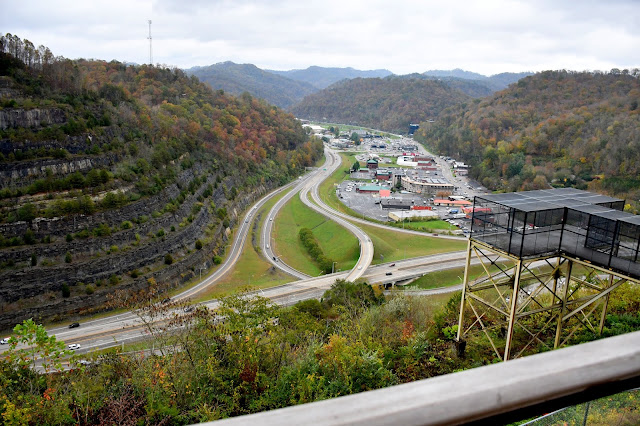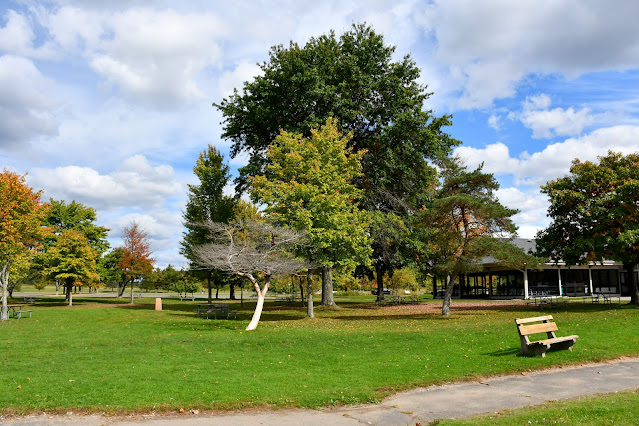Collapse and the End of Industrial Civilization
This picture illustrates perfectly why I'm skeptical of claims of human invincibility (notice the "No Pets" signs and the dude walking his dog). Too much hubris and stupidity abound and one recent example in particular highlights this scenario more than others. For quite some time now (around a decade), I have been warning others about the inevitable collapse of industrial civilization (unfolding around us as I type this). I realize that I'm a relative newcomer, although I stayed in rather small circles until more recently. Not only is our way of life ending, but the very fabric of how we live is changing. For instance, cities are now functionally extinct; obsolete. By 2050, cities will become a hollowed out shell of their former selves and plenty of examples already exist. Large cities will not survive this century. Ghost towns exist all over; previous locations of once-booming areas of so-called "human progress" and "manifest destiny." Most of these towns became ghost towns because the source of their economic prosperity was depleted, leaving little for the population to make a living from. Jobs dried up and people had to move, leaving an insufficient tax base for the local government to operate with. Once this happens, a town effectively slowly dies. Utility companies find it difficult to operate with an insufficient number of customers and usually service is curtailed whereby the town becomes a sacrifice zone.
While ghost towns are numerous and many no longer have any evidence of their existence, cities are much larger and generally have much more infrastructure which leaves more of a reminder of its existence. Ghost cities are far less common, although there are still plenty of examples here too, such as Centralia, Pennsylvania; Picher, Oklahoma; Pripyat, Ukraine; and many other less well-known places, especially uninhabited cities in China (although these have a different reason for being uninhabited, as they have not yet become fully-functioning).
It is very difficult for most people to fathom what life for humans will be like once industrial civilization ceases to exist, which is why I point out ghost towns which can be visited. Some of these ghost towns are ancient, such as Machu Picchu and Mesa Verde, others are more recent. Here is an interesting list to check out. This article highlights some of the above-mentioned towns or cities and explains what man-made disasters caused the towns or cities to become abandoned. Another article I wrote deals with insurance issues and sacrifice (exclusion) zones.
It has become quite clear to me that a large number of people still don't realize the power of the exponential function and how quickly things can unravel in a complex society. Recently I posted a link to Joseph Tainter's book, The Collapse of Complex Societies, and I highly recommend it. I have previously posted Chris Clugston's video based on his book, Blip, which I also highly recommend. Today I post a PDF summary of Clugston's new book, Industrialism - Our Commitment to Impermanence. He predicts that industrial civilization will end by 2050, a rather optimistic prediction. Still, humans do have a way of being very clever and we've been able to kick the can down the road for a considerably long time. We are now coming to the end of that road, however.
I generally see a refusal of most people to accept the fact that ecological overshoot is a predicament with an outcome rather than a problem with a solution. This is typically due to denial of reality and optimism bias and possibly also due to an ignorance of the fact that peak oil is in the rear-view mirror. People still are constantly and consistently looking for solutions not seemingly realizing that none exist. Sure, there ARE things that can be done to reduce the shock of the landing by reducing overshoot, but it is rather apparent that none of those things are yet having any real impact (if any impact at all!).
Instead, I continue to see the ongoing bargaining to maintain civilization, with some folks deciding that moving to rural areas while still enjoying the perks of civilization is the answer. One recent article in the bargaining department from Katie Singer has to do with developing technology that is more ecologically sound. This is a nice and noble idea but one which isn't likely to accomplish much. Because we are in collapse now, many (if not most) advanced technologies are likely to become obsolete within the next 30 years.
I realize that many people are suffering from denial of reality and optimism bias and don't quite understand how technology use has reduced or removed negative feedbacks which once used to keep our numbers in balance with the rest of nature. This has allowed population growth to literally decimate other species not just through population growth but also by all the growth in technology use as a result. Pollution loading is yet another symptom predicament of overshoot which is the result of both of those issues (population growth and the concomitant growth of technology use), and one can easily make the connection to marine wildlife of all types, especially seabirds with a new disease called plasticosis.
If that isn't enough to churn your stomach, how about some flesh-eating Vibrio vulnificus? The Sargassum seaweed also contributes to the plasticosis disease mentioned above and also provides a source of hydrogen sulfide, a topic I have written about before in this article with its implication in extinction events.
Besides pollution loading, another symptom predicament that we are all familiar with, climate change, is also in the news with a new study from Johan Rockström (along with a hefty list of other authors) is written about in these two articles here and here. In yet another strange development, another new study indicates that precisely what I've been saying for years is true. None of this will be surprising to my regular readers, who are used to seeing articles like this. Still, I have always secretly hoped that I would be proved wrong.
Related to the predicament of climate change is the focus on emissions, another symptom predicament, and the attempts to use yet more technology or more complex technology to tackle said emissions. Art Berman writes two new articles attacking the idea that non-renewable "renewable" energy harvesting devices have a higher EROEI than fossil fuels here and here, something that I would have thought common sense would tell a person, considering that these devices are made both from fossil hydrocarbon energy and with said fossil energy and cannot exist in anywhere near even current amounts without those fossil fuels. The plastics, concrete, and steel required for the devices themselves require high heat that is impractical to be supplied by electricity due to the temperatures required and the fact that any outages would destroy the furnaces used for that high heat. That is a risk most factory owners would rather avoid. Of course, road building to provide access to these devices also requires fossil fuels along with all the new infrastructure require to transmit new electrical generation from these devices. Mining for the other materials these devices are made from also require fossil fuels despite a few mining vehicles being powered by batteries (most of the world's mining equipment runs on diesel, not batteries, and this equipment is prohibitively expensive).
Speaking of emissions (and I know that I am rambling, but there is a point to all this), much of the northeastern quadrant of the US was blanketed in thick smoke at the beginning of the month due to the wildfires in Canada. This will become more common as time moves forward as droughts and warmer temperatures bring wildfires to areas that previously rarely, if ever, saw them.
Now, take the contents of this article and apply these conditions to the infrastructure we depend upon daily. Bridge collapses are becoming rather commonplace with a railroad bridge in Montana and the I-95 bridge in Pennsylvania happening just in the last couple of weeks. Some of these are being caused by ordinary accidents and some by infrastructure that is inadequate for the current application. In any case, however, as time moves forward, all infrastructure is going to be asked to endure new challenges as conditions change, extreme weather events become more extreme, and the energy to facilitate infrastructure improvements, replacements, and repairs and maintenance become less available.
Update 11-25-24: A newer video from Bill McGuire discusses a more climate-based scenario of collapse with an earlier date (2040).
Update 6-18-25: A new article from Richard Crim details how we could easily hit +3C by 2050.
My latest discussion on video with Steve Bull and Michael Dowd covers a wide variety of topics and terrain, including these topics covered today here. I could have easily spent another hour discussing the topics at hand. Like I consistently point out, Live Now while you still can!










Glad you mentioned my call with you and Steve, but, honesty, I stopped reading at "By 2050, cities will..."
ReplyDeleteCommon, Erik, really?!?
Just sayin'...
Yes, Michael, notice that this is what the book (and link) establishes; not my own personal assessment. I added that I think that is a rather optimistic prediction.
DeleteBusy reading "the matter with things", which says (page 441) the environment and organisms actively co-determine each other. So, as most people live in cities now, which are epigenetically determining them and are being determined in some sort of death spiral and are, as you say, functionally extinct, so are the people who live in them even without all the other overshoot symptoms to account with. They are evolving to live in a functionally extinct environment. Really, we might as well enjoy life now and have a beer with friends.
ReplyDeleteHuman overshoot has an insidious outcome and certainly has no solution. Sitting on this runaway train with a cat in my lap, we both are enjoying the ride as the washed out bridge appears ahead. Why aren't we slowing down?
ReplyDelete